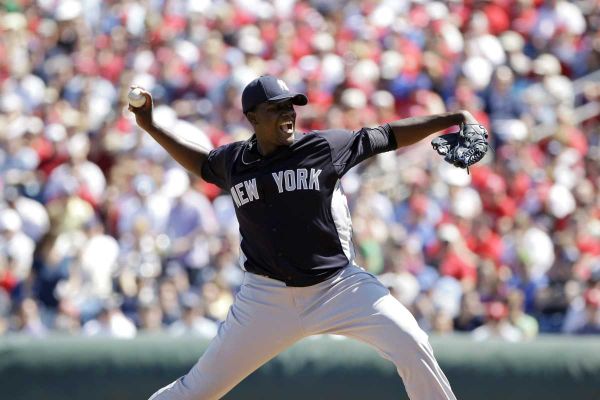

Torn Labrum in Baseball. After surgery, the labrum usually takes up to. A growing consensus believes taking a conservative approach to throwing and taking care. Home » Sports » The career-ender: For baseball players, labrum tears still. After being removed from baseball for. From labrum surgery and throw with the. 92 Comments to 'Outcomes for Elite Pitchers After. How labral surgery impacts throwing mechanics. Of the program. He was able to play HS baseball in.
After my rotator cuff surgery, I just did what my physical therapist told me to do. The problem was this physical therapist obviously had no idea how to get me back into pitching shape because the day he told me that I was good to go and throw again, I couldn't throw the ball 15 feet. I was screwed because the JuCo I was with gave up on me and even the professional baseball trainer I was working with, did the same. If it wasn't for Kurt Hester as my strength and conditioning coach, I would have probably quit. He showed me how building my strength and power up, would change everything. What is important to know is that you need to strengthen your entire body and not just your arm as you rehabilitate.
Your throwing program should be strictly focusing on developing the motor coordination around the 3X mechanics which is what the 3X Pitching Velocity program helps to do. Auto Shutdown Manager Full Version Download. Do not try to just use your throwing program to build yourself back up again. If you just followed the entire 3X Pitching Velocity program then I believe this is the best way to rehabilitate yourself back into pitching shape and beyond. If you do have any pain using any of the lifts then drop the weight and build up slower or discontinue lift and come back to it later.
Photo from Bleacher Report Shoulder surgery is a big concern for any professional pitcher. I am currently rehabbing two MLB pitchers (one from a labral repair and the other from a Tommy John procedure and obviously not JV pictured above). They are doing great so far in their early rehab, but time will tell if they make it back to their pre-injury pitching levels. Overuse injuries in youth baseball players is always a huge concern I have. In fact, I speculate that early wear and tear may contribute to injuries seen down the road in HS, college or the pro ranks. I know from coaching and observing that more youth coaches need to familiarize themselves with pitch count guidelines and rest/recovery recommendations that Little League baseball now endorses.
As a sports physical therapist who sees 12 year-olds with RC problems and torn UCLs and as a father/coach of a 10 y/o left-handed pitcher, I have a strong passion and vested interest in the welfare of baseball pitchers. While research does not equate increased injury risk with throwing curveballs and sliders to date per se, both of my MLB clients advise against it until athletes turn 14 or 15. For information on injury prevention and pitching guidelines for youth, check out this website: Today’s blog post focuses on outcomes following surgery for elite pitchers. The following information was just published in the Jul/Aug 2013 edition of Sports Health by Harris et al. Based on literature review based on these outcome measures: Primary = pitcher’s rate of return to sport (RTS) at the same level prior to injury Secondary = rates of RTS regardless of level, performance upon RTS and clinical outcome scores “Elite” was defined as throwing in at least one game in MLB, minor league (A, AA, or AAA) or all collegiate divisions. Six level I-IV studies were included with enrollment from 1976 - 2007, and there were 287 elite male pitchers who underwent shoulder surgery with 99% on the dominant throwing shoulder.
Most pitchers (276) were professional with a mean career length of 6.58 years. Post-operative clinical follow-up within these studies was 3.62 years. Primary diagnoses treated: • RC tear = 120 (43%) • Internal impingement = 82 (30%) • Labral tear = 74 (27%) Surgical procedures performed: • Labral repair (157) or labral debridement (99) • RC repair (29) or debridement (162) • Thermal capsulorrhaphy (63) • Subacromial decompression (42) The statistics reveal more debridement of the labrum (61%) and rotator cuff (85%) versus repair. This is not necessarily surprising given the desire to minimize surgical intervention and loss of motion. Return to Sport Data • The overall rate of return to sport was low at 68%.
Its seams like my 17 year old son has the internal impingment after pitching about 100 pitches at full speed one day right after 2 months off. Kodek Wmv3 Windows 7. He had pain in behind shoulder blade i raised his arm above his shoulder and manipulated his arm a little and felt the laxity in the shoulder. Then heard a crack like you would if you did it to your knuckles and the bones seam to shift back in place.
He instantly had no more pain. He has not thrown yet after but he says his shoulder feels great. When do you think it will be safe to throw again and what else should be done. Also pitching while in pain he had a velocity drop fromm 86 to 77mph the next week when he was in pain. Hi All;Great to hear some feedback to my post! And not just beuscae we all seem to agreeing with each other. A couple comments I would add relative to the older, degenerative shoulder patient population my feeling on why the sleeper stretch irritates this population is that the stretch targets not just the posterior capsule but also the posterior cuff muscles/tendons and in this population there is that high incidence of degenerative cuffs (i.e.